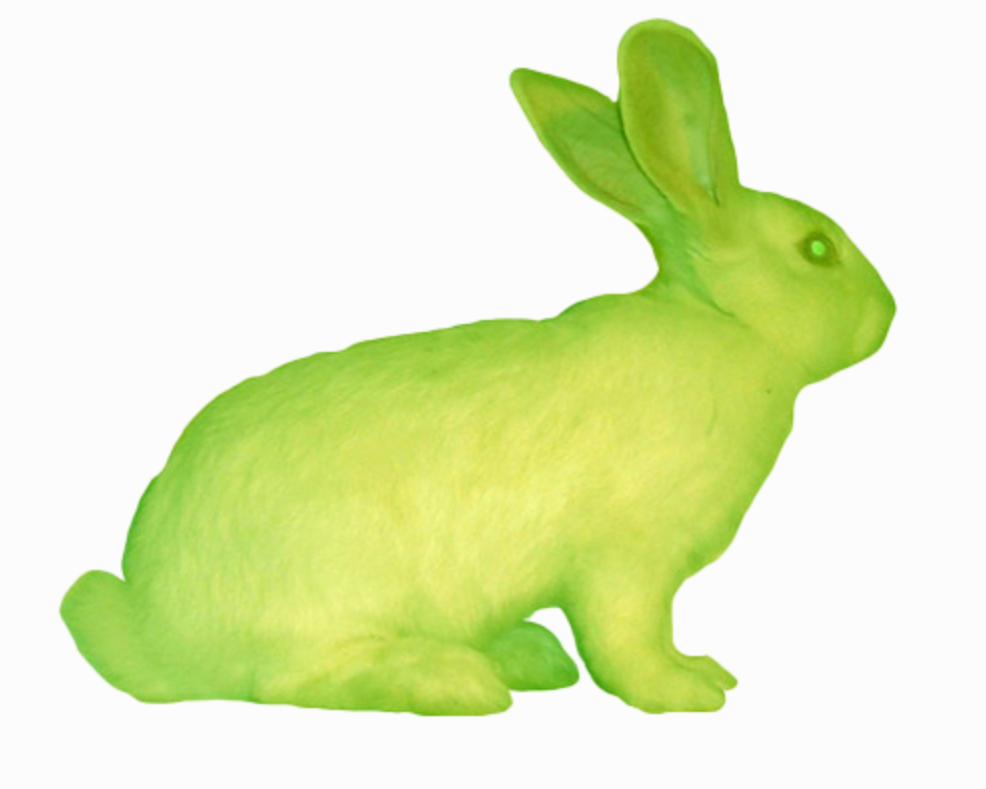This week's lecture content covering Biotech and Art bears a striking resemblance with the content covering medicine and art. Moving forward from the integration of medical technology and biological organisms, biotech and art focuses on change to the genetic composition of living creatures. Some prominent works from artists include Eduardo Kac's GFP Bunny and Edward Steichen's Delphiniums. Artworks within this field raise important ethical questions regarding humanity's impact on the environment around us as a tool for art.
 |
| Eduardo Kac's GFP Bunny. Retrieved from GFP Bunny (ekac.org) |
 |
| Edward Steichen's Delphiniums. Retrieved from MoMA | Edward Steichen Archive: Delphiniums Blue (and White and Pink, Too) |
Projects concerning animals are almost always controversial due to their inability to consent to our interactions. From hunting for sport to packing as many animals into a farm as possible, the relationship between humans and animals presents a gray area in morality and ethics, and it's up to the individual to draw the line. For example, I believe hunting for sport is unnecessary and cruel, but I am generally okay with the production of meat and animal products. Thus, it is important to consider the notion of harm in these artworks. In Kac's fluorescent bunny, the bunny isn't directly harmed as a result of the modification. However, in Marta de Menezes project on butterfly modification, titled Nature?, holes were artificially produced in the wings, which although likely not hurting the creatures directly, presents a needless and detrimental action between humans and living organisms. Every biotech artwork must be analyzed at an individual level, but largely there should be a set of restrictions on these projects that necessitate that no undue harm is placed on these animals.
 |
| Marta de Menezes' Nature?. Retrieved from Nature? – Marta de Menezes. |
Overall, the relationship between biotech and art should be treated with caution. While some works, like Steichen's genetically modified flowers, aren't dissimilar from the generations of agricultural artificial selection, works like Menezes genetically modified butterflies pushes the boundaries of human creativity to a space of unnecessary cruelty. Harming or using animals just for the sake of "artwork" is cruel and serves very little material purpose. If it is too remain, it should be heavily regulated and have a strict set of standards that artists must abide by.
Works Cited
De Menezes, Marta. "Nature?", 1999, https://martademenezes.com/art/nature/nature
Kac, Eduardo. "GFP Bunny", 2000, https://www.ekac.org/gfpbunny.html
Steichen, Edward. "Delphiniums", 1 July 1936,
https://www.moma.org/explore/inside_out/2011/03/08/edward-steichen-archive-delphiniums
-blue-and-white-and-pink-too/
The Museum For Insects. "Marta de Menezes".
https://hypernatural.com/museum/marta_de_menezes.html
Vesna, Victoria. "5 bioart pt1 1280x720", YouTube, YouTube, 18 Sep.
2013, https://youtu.be/PaThVnA1kyg
Vesna, Victoria. "5 BioArt pt2", YouTube, YouTube, 17 May 2012, https://youtu.be/MdSt-Hjyi2I
list=PL9DBF43664EAC8BC7
Vesna, Victoria. "5 BioArt pt 5", YouTube, YouTube, 17 May 2012, https://youtu.be/z7zHIdsFS3A
list=PL9DBF43664EAC8BC7




No comments:
Post a Comment